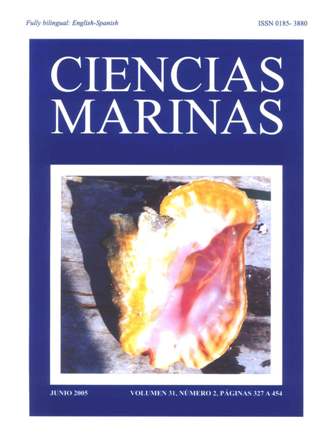Influence of salinity on the growth and biochemical composition of the cyanobacterium Synechococcus sp.
Main Article Content
Abstract
The study of cyanobacteria isolated from hypersaline environments is of interest because of their metabolic and ecophysiologic versatility in adapting to extreme conditions of salinity, temperature, irradiance and nutrient availability. The effect of salinity at 0‰, 35‰, 70‰ and 100‰ on the growth, dry weight, and pigment, protein, carbohydrate and lipid production of the cyanobacterium Synechococcus sp. was determined. Bioassays were kept in ALGAL medium equivalent to 8 mM NaNO3, constant aeration, 12:12 h photoperiod, 28 ± 2ºC and 156 µmol quanta m–2 s–1 of irradiance. The cyanobacterium was able to grow under all salinities tested. Cell density was optimized at 35‰, with 607.64 ± 14.35 cells mL–1. The highest values of dry weight (3.87 ± 0.03 ng cell–1), chlorophyll a (41.86 ± 0.39 fg cell–1), ß-carotene (9.03 ± 0.15 fg cell–1), zeaxanthin (9.74 ± 0.24 fg cell–1), proteins (1.95 ± 0.05 pg cell–1) and carbohydrates (1.80 ± 0.05 pg cell–1) were obtained at 100‰; however, the highest lipid content (0.45 ± 0.04 pg cell–1) was reached at 0‰. This Synechococcus strain shows halotolerance and the capacity to modulate the production of enriched biomass with pigments, proteins, carbohydrates and lipids in terms of salinity.
Downloads
Article Details

This work is licensed under a Creative Commons Attribution 4.0 International License.
This is an open access article distributed under a Creative Commons Attribution 4.0 License, which allows you to share and adapt the work, as long as you give appropriate credit to the original author(s) and the source, provide a link to the Creative Commons license, and indicate if changes were made. Figures, tables and other elements in the article are included in the article’s CC BY 4.0 license, unless otherwise indicated. The journal title is protected by copyrights and not subject to this license. Full license deed can be viewed here.

